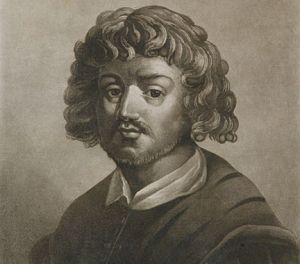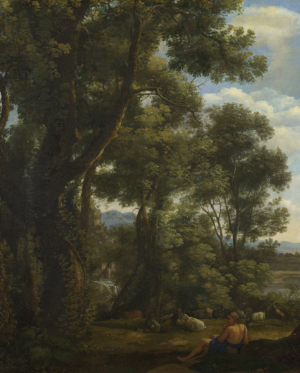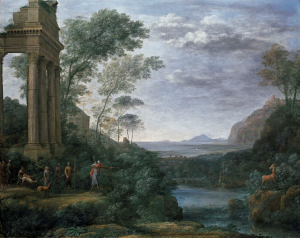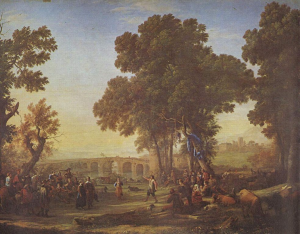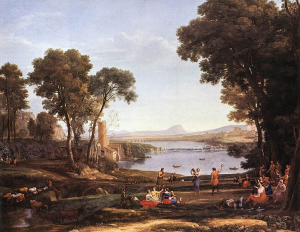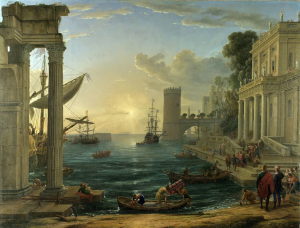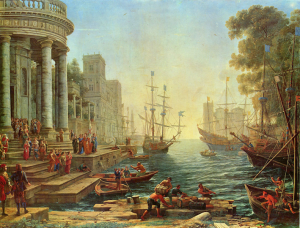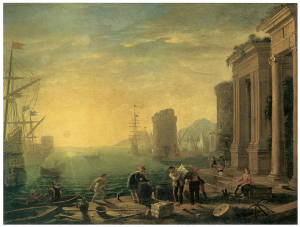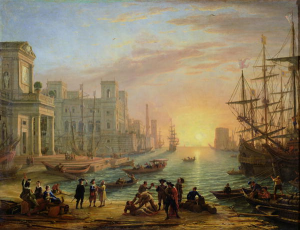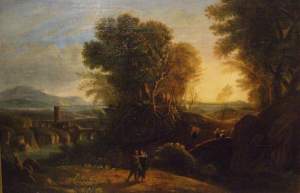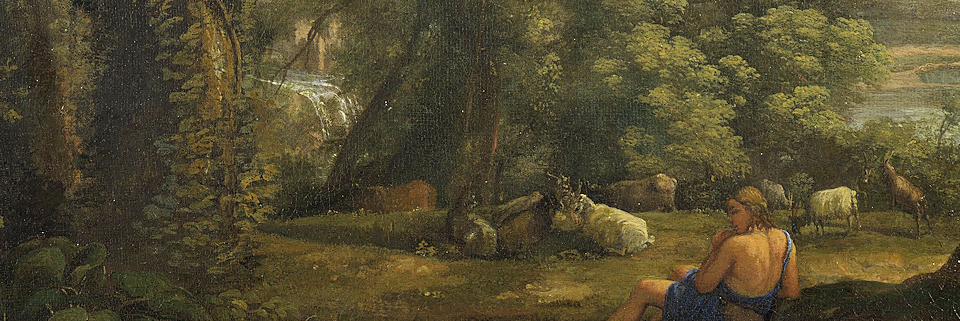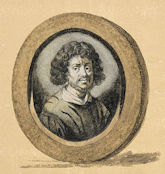Claude Lorrain (Gellée) was a French painter, draughtsman and engraver of the Baroque era. He spent most of his life in Italy, and he is admired for his achievements in landscape painting. Claude was born in the Duchy of Lorraine but left around 1612 for Germany, then Rome, where he became a studio assistant to the landscapist Agostino Tassi. He visited Naples and returned to Nancy before settling permanently in Rome around 1628. He sketched in the Roman countryside with Poussin. Ideas from the drawings he made were integrated into oil paintings finished in the studio.
. . . Claude Lorrain's paintings are absolute points of reference in the genre of landscape. Building on the foundation laid for him by artists like Titian, Paul Bril and Annibale Carracci, Lorrain was the bold leader of the 17th century ideal landscape. Although landscape painting was long perceived as a "lesser" genre, Claude Lorrain achieved enormous success in his own lifetime, and continued to exert a powerful influence on French and English painting for centuries after his death . . . (Artable)
. . . Throughout his life John Constable was devoted to the work of Lorrain – from around 1800, when he first admired the paintings by Claude in Sir George Beaumont’s collection, to June 1836, a year before his death, when he praised ‘the inimitable Claude’ in a lecture he presented to the Royal Institution. He described him as ‘the most perfect landscape painter the world ever saw’, and
declared that in Claude’s landscape ‘all is lovely – all amiable – all is amenity and repose; the calm sunshine of the heart’ (Beckett, Discourses, pp. 52–53).
You may find additional reference links to Lorrain and his art, HERE.
